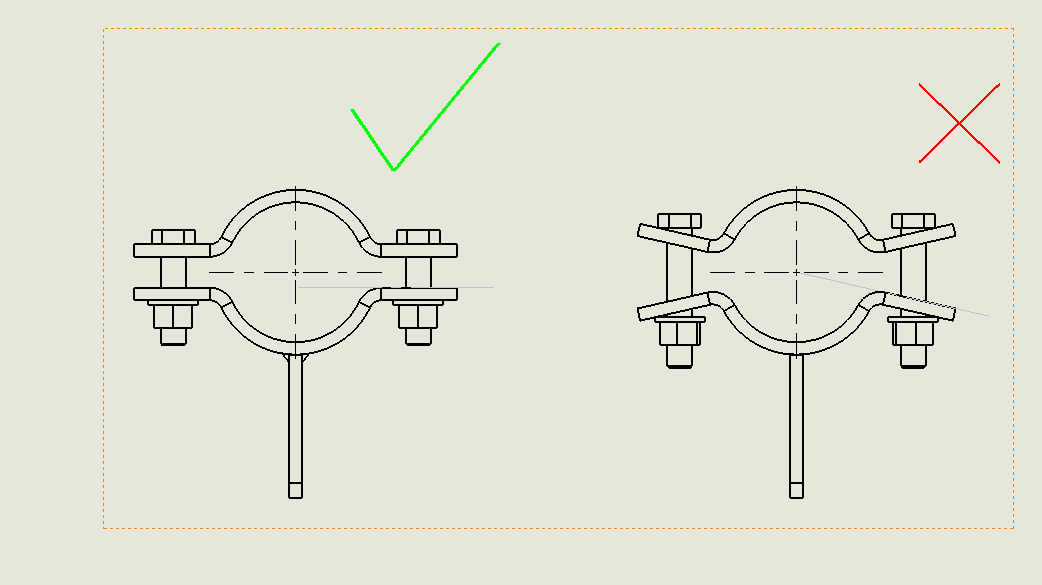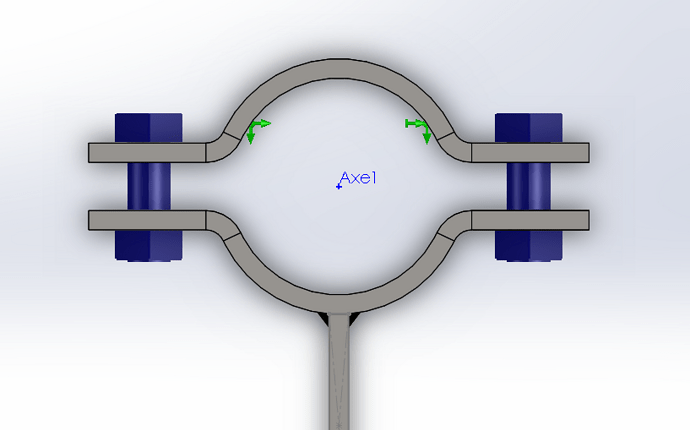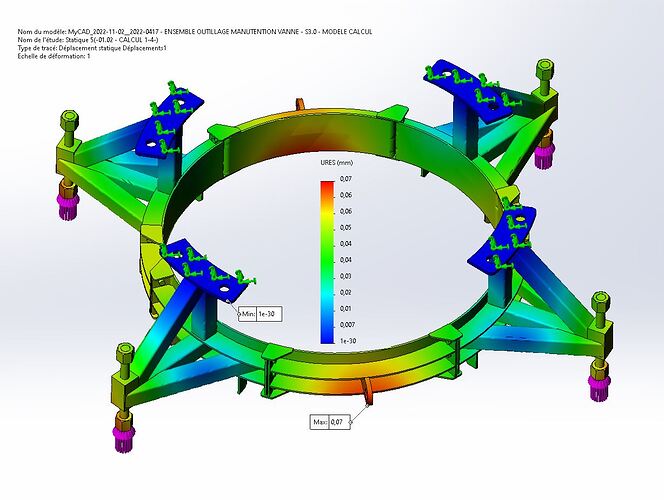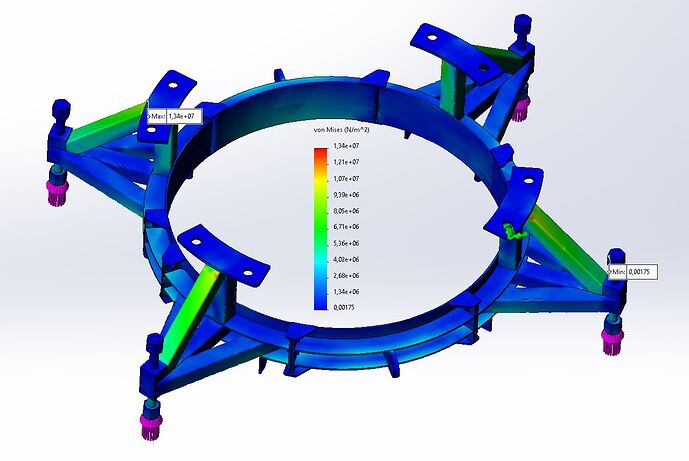Hello
Personally, I find it a bit strange to do this type of simulation.
Don't be surprised by the following and please take my remarks in a positive way if possible.
I'll summarize to see if I understood
If we focus on the bottom collar, what would be interesting would be to see the deformation of the two vertical pieces that hold the three bolts and nuts.
The weight of the cuff or the handling conditions are unknown. (can you answer these 2 questions)
1°) is it a handling only for installation under the upper flange
2°) or does the tool remain in place and is subject to forces other than holding it in place (dynamic forces, for example during handling and assembly).
We can assume that it is just a matter of positioning before a more substantial assembly.
If my reasoning is correct (and not knowing the weight of the cuff, etc...) So even with a tightening of the bolts barely pressurized, it must be more than enough to hold the half clamps.
Conclusion for the simulation
No need for connector bolts which are really useful in more critical cases and where bolts play a more important role (AMHA).
As standard, the strength of the bolts is known and here we do not try to know their stress and resistance.
If you really want to do the simulation, you just have to do it on half a necklace by putting:
1°) a fixed part on the inner diameter of the collar (since the cuff is considered to be non-deformable given that it is not waterproof).
2°) make areas equal to the diameter of the washers (circle sketch + separation line function)
3°) apply a force on each area (force depends on the screw class 8.8, 10.9, 12.9 or even the screw manufacturers' charts)
Launch with a standard curvature-based fine mesh
For the result, make the adjustment where the deformation is equal to the real (and not automatic which exaggerates the deformation by 1000%)
That's it while waiting for you to answer the questions since weight and possible dynamic stresses can influence the conditions of the study. This is a static study only.
Zozotian prediction: the slight deformations, if there are any, will first be seen on the two outer bolts and more faintly see without deformation on the central nut screw
Kind regards
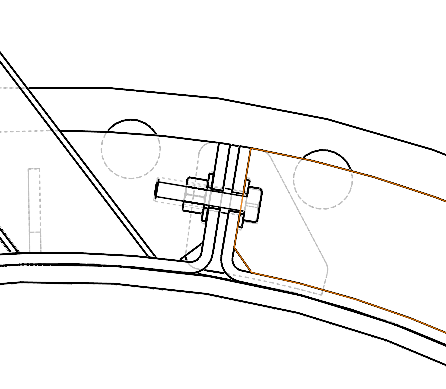
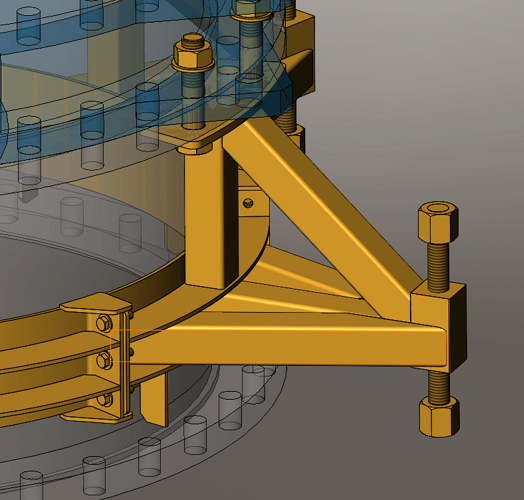
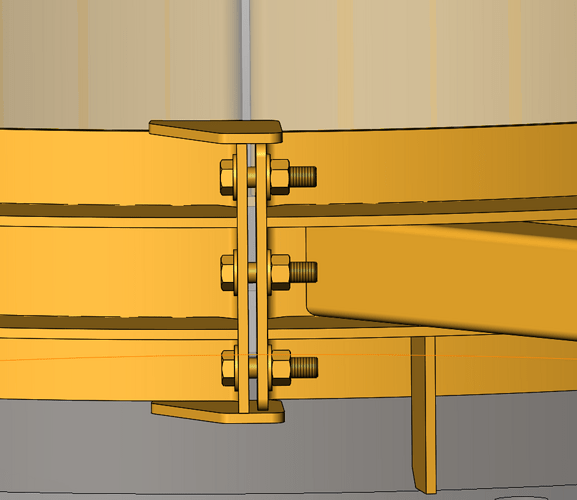
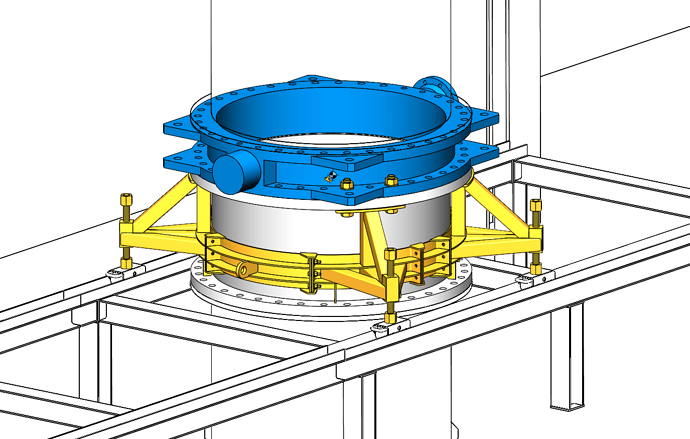
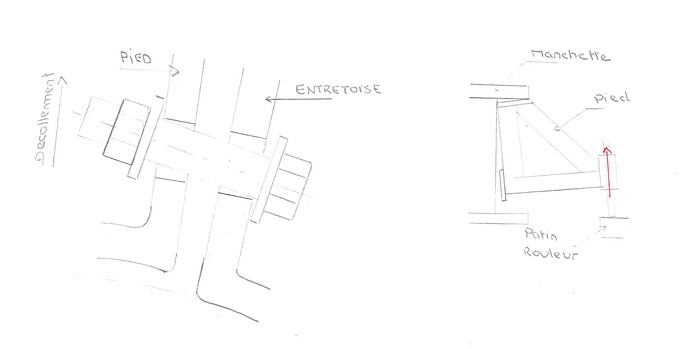

 method
method 
